This summer we have been exploring the history of Victorian tea culture. The mass popularity of tea in the 19th century led to new furniture, a growing amount of teaware, and new household schedules. It also led to social occasions that society molded around. This included afternoon tea, high tea, tea parties, and tea dances. Tea dances originated in the 1880s and then peaked in popularity along with the tango in 1913. Because I don’t normally think of either Victorians dancing or the tango as things that took place during the day I thought looking at the tea dance trend would be a fun way to continue our look at tea culture, especially as a fun summer post.
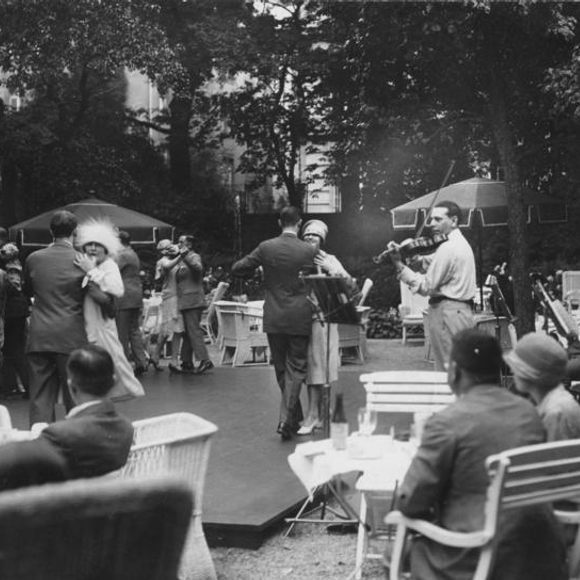
See you at the tea dance?
The Victorian era brought with it an enormous interest in new forms of socializing. While it may not feel at all unusual today to make weekend plans with friends, in the 19th century many of these activities would be been brand new to society. We have explored these new forms of “going out” in the following posts:
–How to host a Victorian picnic
-How crazy was the bicycle craze?
A growing interest in tea and the ever-growing desire for more mixed-gender mingling led to the emergence of the tea dance. These were more casual occasions than a ball or dinner party and were held in the late afternoon before dinner. They were simply an opportunity for friends to come together for some low-key fun, Victorian style. Party Giving on Every Scale, written in 1880 reads:
“An afternoon dance is an inexpensive entertainment; it takes place from four to seven, thus only light refreshments are required, and the heavy expenses of a ball, supper, and long wine bill are not incurred, in addition to many other outlays in the matter of lighting, floral decorations, and the like, to say nothing of the trouble saved, and the inconvenience avoided, to the inmates of a house, by the style of preparations required for a dance given in the afternoon in comparison with one given in the evening.”
Although meant to be casual events, they were still taken quite seriously by the hostess. Every effort was made to make them memorable. Judging by the refreshments served they do sound like the perfect way to spend a summer afternoon
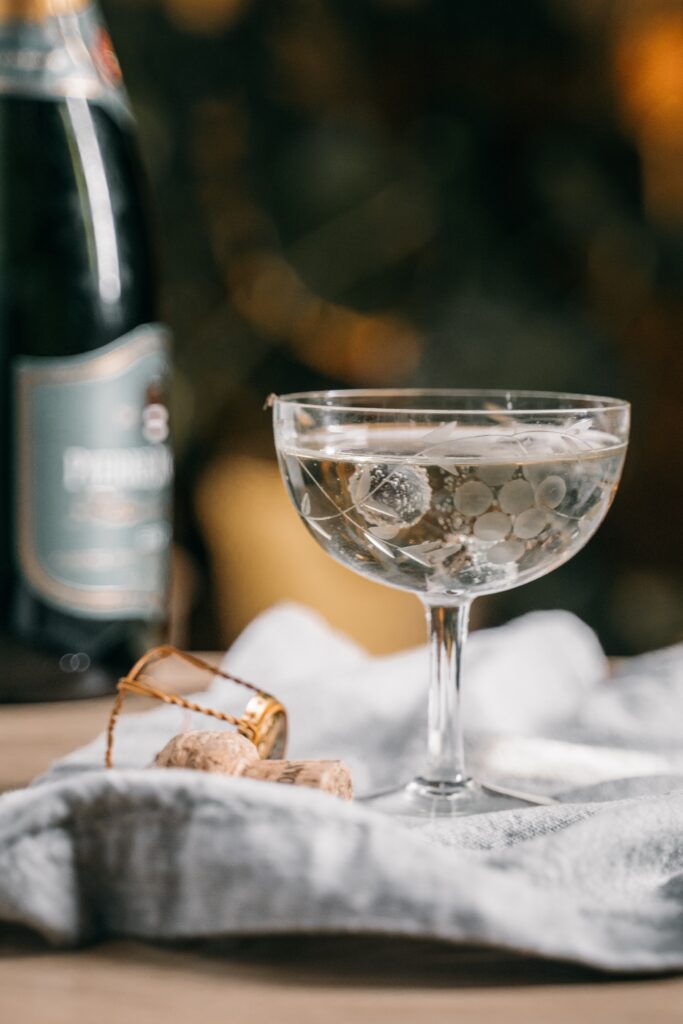
American Etiquette and Rules of Politeness, written in 1882 suggests:
“Light refreshments, such as tea, coffee, frozen punch, cakes, ices, and fruits, are served. After the light refreshments, cold collations are served. Often the table is set and renewed from time to time with great varieties.”
As for decorations, Party Giving on Every Scale urges hostesses to keep things simple and sweet:
“Floral decorations, if attempted at all, are on a very limited scale, and generally comprise vases of cut flowers, in addition to flowering plants, ferns, grasses, &c; these decorations are not imperative at an afternoon dance, and when indulged in range from 15s. To £15 and upwards.”
Tea dances go public
By 1900 the tea dance trend was beginning to make its way into public places with growing demand each year. This was for multiple reasons including an increased desire on the part of females to appear in public and a growing demand for opportunities for unmarried men and women to socialize without chaperones. Tea was quickly made available in the cities and music soon followed.
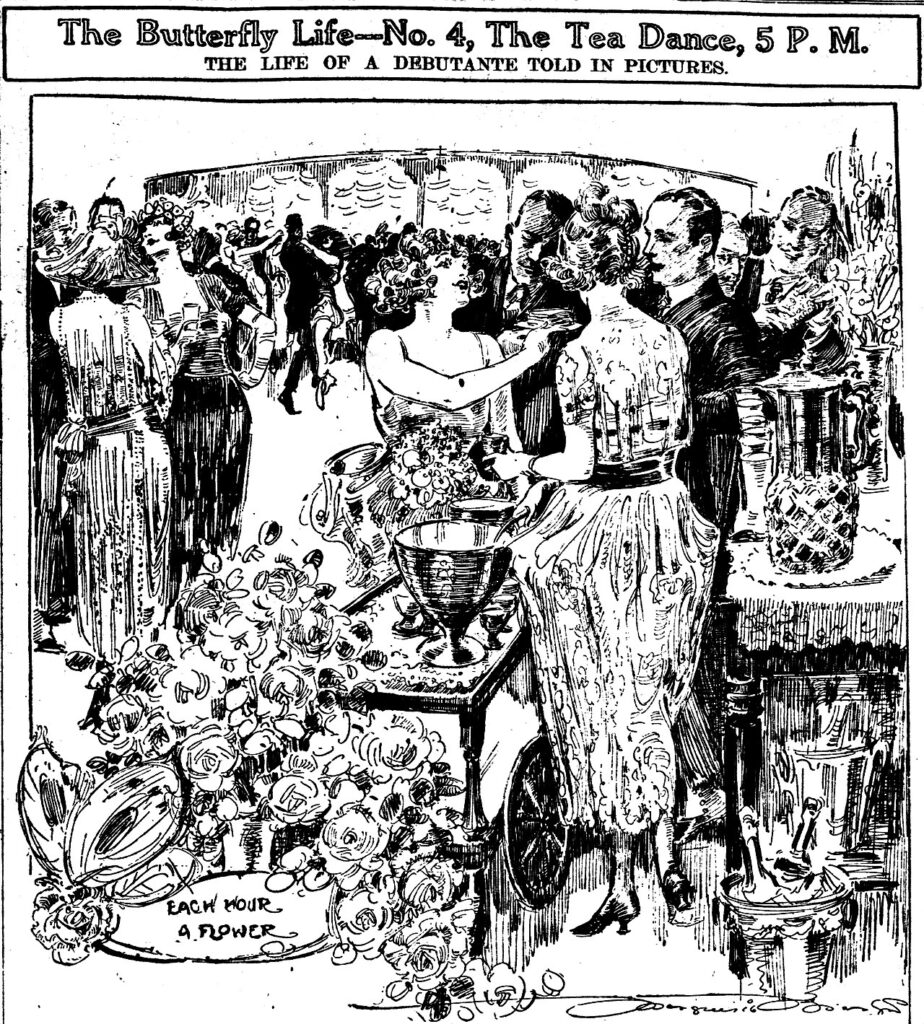
One popular bakery, Aerated Bread Company, began by serving their regulars tea. When demand grew they expanded into a tea room, complete with a band in the afternoons. Soon this tea room and others became popular destinations for young men and women to meet for 5 o’clock dances, perhaps as a precursor to today’s happy hours.
A well-known pop-culture depiction of tea dances is in season 4 of Downton Abbey when lady Rose talks Anna into attending one with her. While Anna is uncomfortable with the setting she soon finds that she cannot resist the one-step.
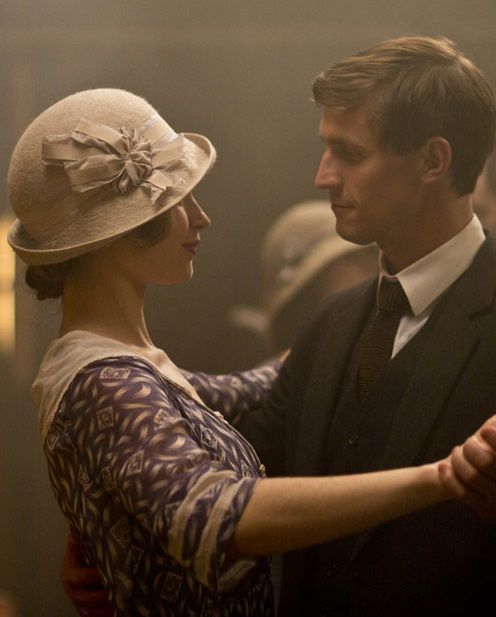
Toss in some tango
If men and women mingling over some afternoon tea weren’t scandalous enough, the 1910s would take a shocking turn. Tango first reached England with the 1912 musical comedy The Sunshine Girl. Enough intrigue was created with the dance that classes soon sprang up and performances were given in fancy hotels and restaurants. Tea rooms would be next.
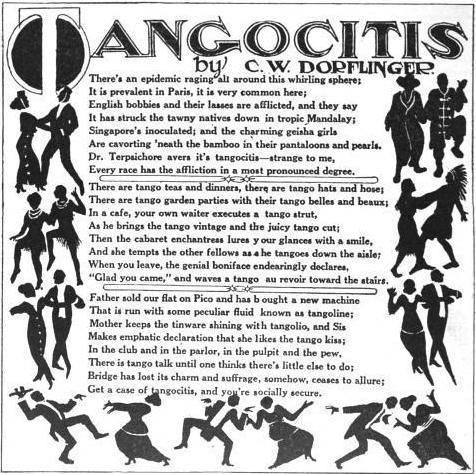
Image source: Edwardian Promenade
Creating controversy
Tango teas would remain one of the biggest and most controversial trends in England until World War I put an end to the fun. They were so widely popular that they made headlines.
The story below from a 1913 New York Times article highlights the popularity of a Berlin tango tea and reads in part:
“Judging by the throngs which attended the opening tea this week, the innovation will prove a bigger attraction than bargain sales, although it remains to be seen how much interest or strength the women will have left for purchase making.”
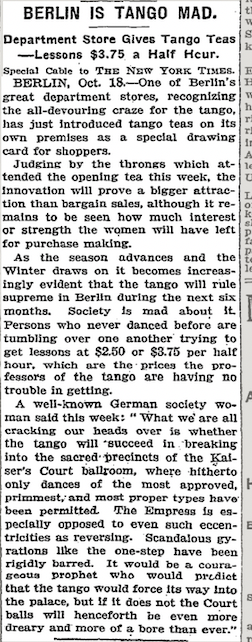
And from Paris:
“Tango teas are now the rage, having superseded every other form of afternoon entertainment. No hostess thinks of inviting friends to tea without obtaining a first-class pianist, while the furniture is cleared from the rooms much as possible so that the guests may, when they care to rise from the table, take a few turns around.”
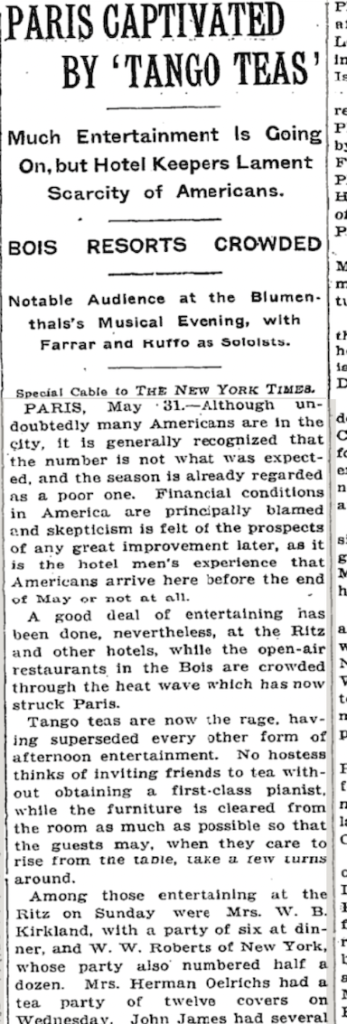
The fact that they were newsworthy should give you an idea of just how new to the human eye the tango was. The tango was not just seen by many to not be appropriate for tea time, it was seen as altogether a danger to public decency. The 1913 article below tells of an NYC mayor who was out to ban the popular afternoon activity:
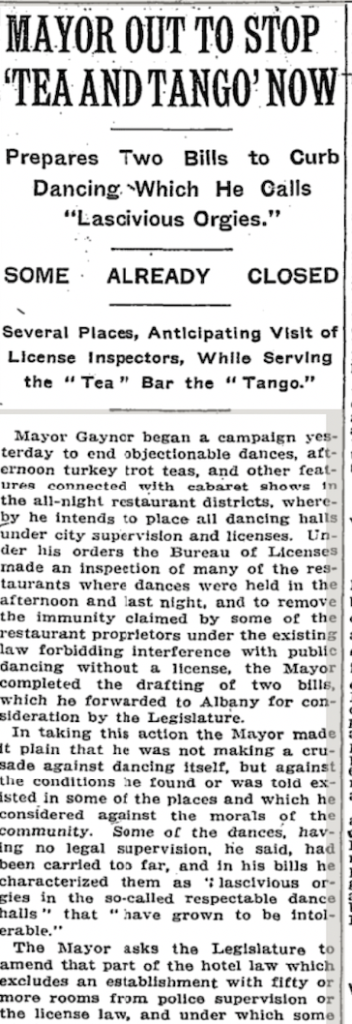
And in my favorite of the articles the author refers to the tango teas as less than respectable but not quite evil:
“Of course, if girls dance in these places with strange men they are not nice girls, but thus far there is no widely proclaimed evidence that the tea dance is one of the lures of Satan.”
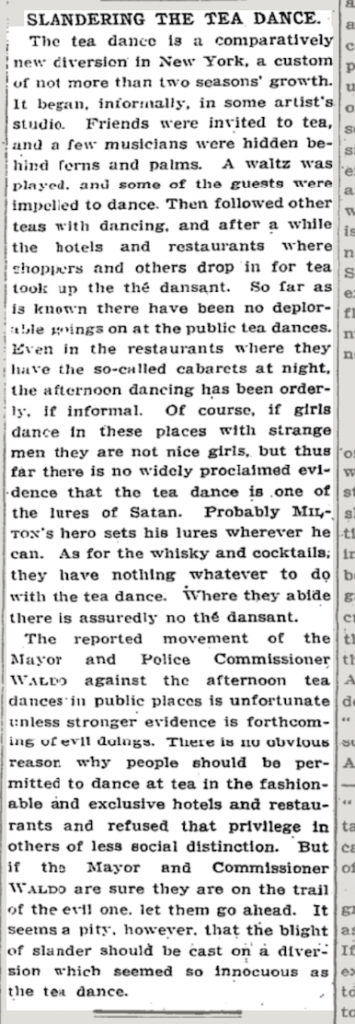
The article goes on to point out that the tea dances do in fact, serve tea, and not hard liquor as some have rumored.
World War I would bring an end to the tea dance as Edwardians knew it. The tradition would make a comeback in the 1940s and 1950s as a popular fundraiser event.
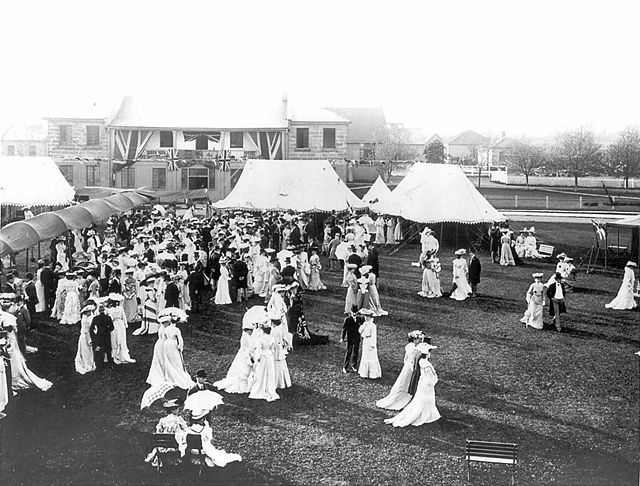

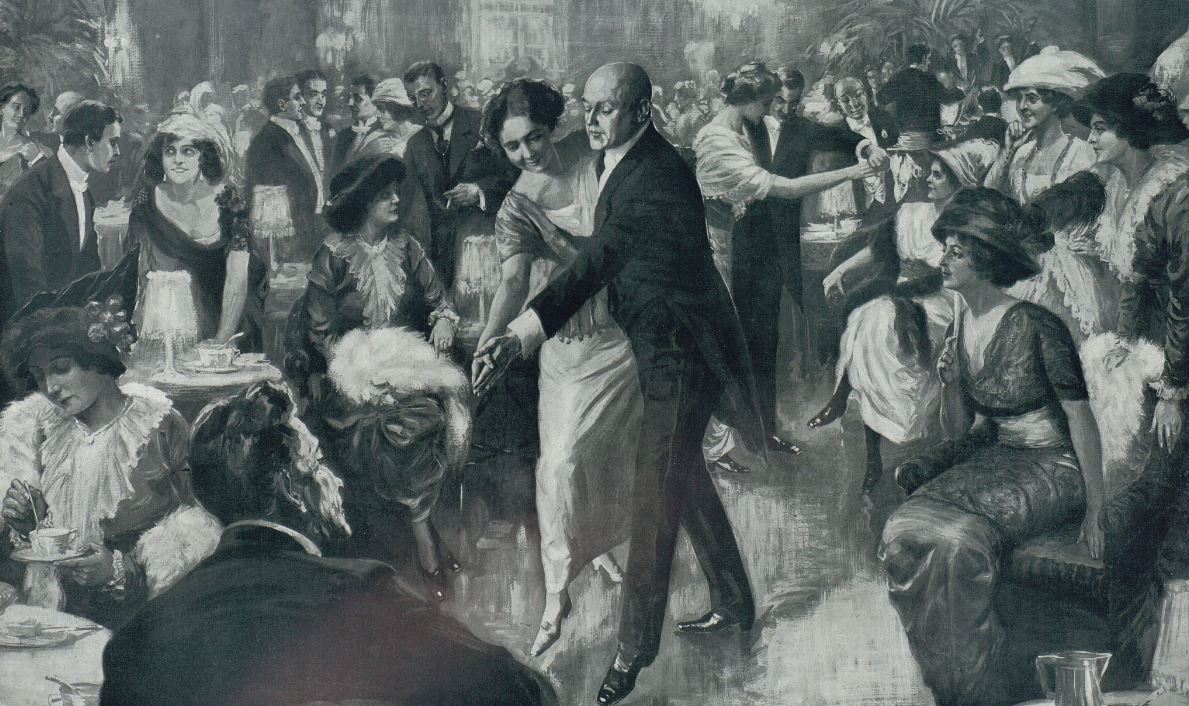











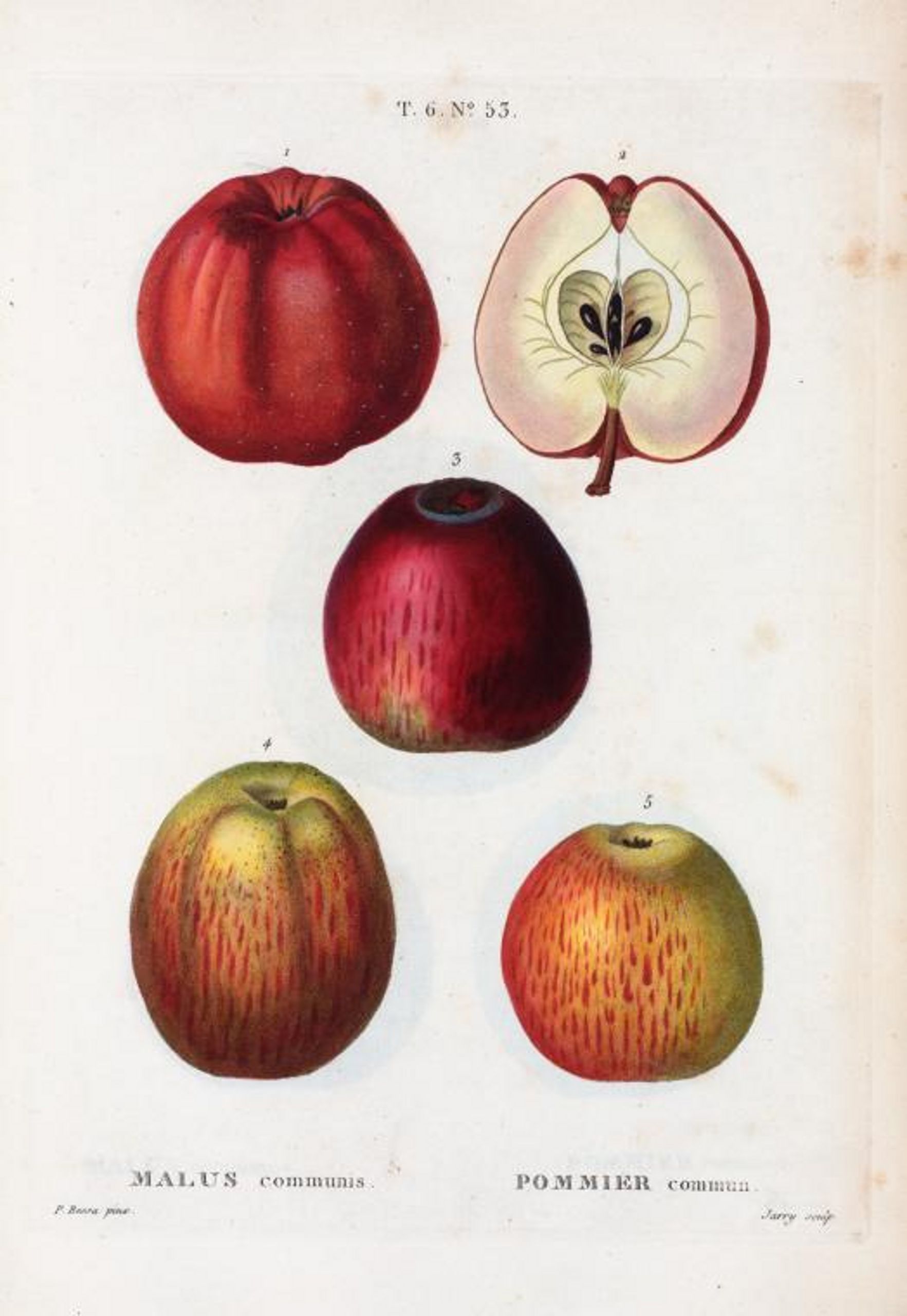
Leave A Comment